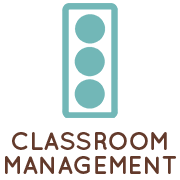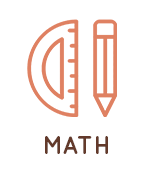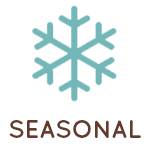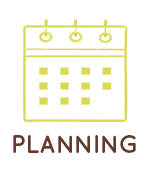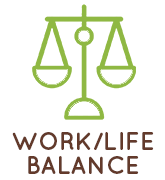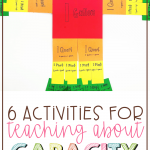
When I was younger, I hated learning anything about our measurement system- the American, Standard measurement system. And when my teacher threw in the Metric System it felt even more confusing to me. Trying to convert, understanding sizes, why we had two systems; It was too much. As I got older, I understood a bit more, but I think the real problem for me was just staring at the problems in the textbook had no real meaning to me. I don’t recall any time in math class where we actually got containers out and measured. Sure, we used rulers to draw and measure lines, but that was it.
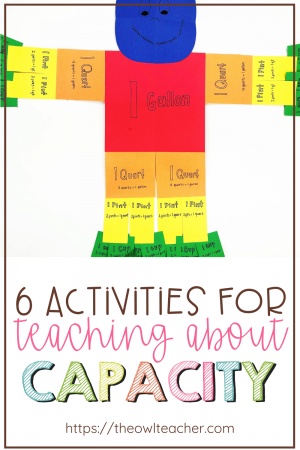
Luckily, capacity doesn’t have to be difficult for students and we can make it a bit more concrete for them now. In fact, that’s going to be the best way to help them fully develop an understanding of it. Below I have some activities that will not only help your students grasp measuring capacity but also see the connections between it and other mathematical concepts, such as fractions. These activities can be used together as a whole group, in small groups, or in math centers.
Activities to Help Students Understand Capacity
1.) Just like with fractions, create capacity strips made of construction paper that represent the various units. If desired, you could even label them their fractional portion. Take 5 colors of 12×18 construction paper and cut it into 3×18 strips. Cut enough so that each student has their own set of strips and you have two sets. I would make one complete set ahead of time and then use the other set with your class as you explain.
- Take your (red) strip and label it: 1 Gallon (128 fluid oz) / (1 whole)
- On your next (orange) strip, fold it and cut it in half. Label each piece: 1/2 Gallon (64 fluid oz) / (1/2)
- Take your next (yellow) strip, fold it and cut it into 4 equal pieces. Label each piece: 1 quart (32 fluid oz) / (1/4)
- Take your next (green) strip, fold it and cut it into 8 equal pieces. Label each piece: 1 pint (16 fluid oz) / (1/8)
- Take your next (blue) strip, fold it and cut it into 16 equal pieces. Label each piece: 1 cup (8 fluid oz) / (1/16)
Then, just like with fraction strips, students can use these as manipulatives to assist with future problems. Have students store these pieces in a plastic sandwich bag or envelope.
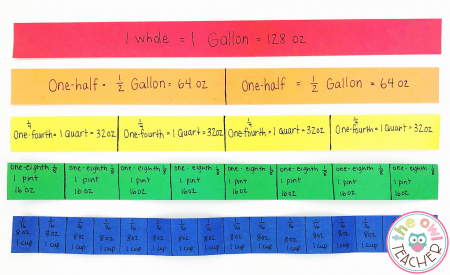
Or, if you’d rather, create a capacity flipbook using larger pieces of paper (half of a 9×12 piece of construction paper) and staple them together. The final product will look similar to the image below:
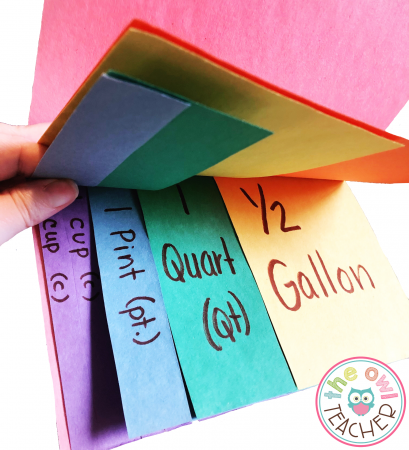
2.) To practice equivalence, play the game “Get to One Gallon.” It’s similar to the fraction version if you’ve ever played it. Using a wooden number cube (or some blank number cube), label the sides 1/2 g., qt., pt., pt., c., and c. Have students work in groups and place the one strip (red- 1 gallon) lengthwise in front of them. You will roll the die you just created above and call out the unit they need to place on their strip. Students switch out whenever they can to use the fewest number of fraction pieces. (For instance, if they have 2 cup strips, they can switch them out for a pint strip.) The first student to get closest to one without going over wins. During this game, you can ask questions like, “how much more do you need to get to one gallon, and so on. You can also do the complete opposite by having students fill their one strip with any of the strips (as long as it equals one) and as you roll, they remove and/or swap out strips until someone gets as close to zero as possible.
3.) Create stations with a variety of materials such as cereal, noodles, rice, dried beans, sand, water, and so on. Then have students predict and measure if there is more or less than a certain amount (such as a pint or a liter). This will help students learn the approximate size and help them see how much make up that amount.
4.) Have a sponge squeeze relay. I know this sounds dangerous and crazy. I hear you. You’d have to have some very strict rules and strong classroom management. And, when I say relay, I do not mean run. You can always vary it a little for your classroom by having students stay in groups rather than walking toward a specific location. Have water in a bucket, bowl, or an aluminum pan. Provide each group with a small sponge, as you’d use in the kitchen. Provide a variety of containers that are labeled A to J (or whatever letter based on how many you want to do). Have students fill those containers using their sponge to the nearest mL that you assigned each letter. (I would write on the board how much to measure each one to).
5.) Use tricks such as the Large G (on the chart below, in the image) to help students remember the sizes and for converting. I had many of my students drawing this on their papers for the state test all the time. Another is the mnemonics for converting – convert multiplication large to small (monkeys look stupid) and divide small to large (don’t stop laughing).
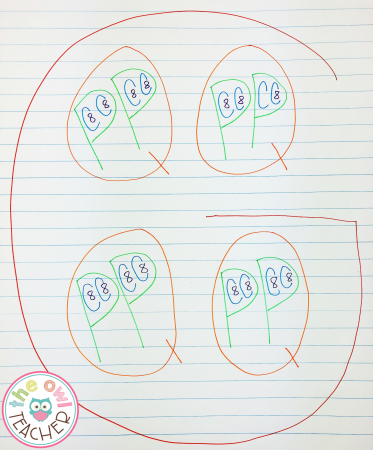
6.) Create the Gallon Man. I love creating the gallon man. It’s so much fun and a great way for your students to be active in math. Sometimes they just need a quick break from the nonstop computation problems. It also makes for a cute display.
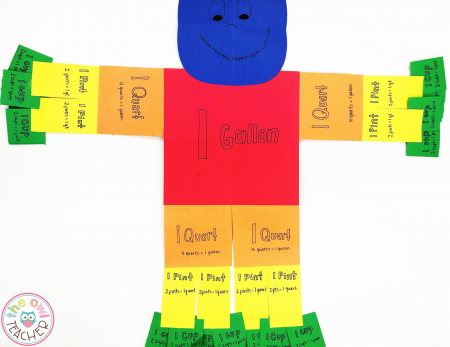
With just these few activities, your students are likely to grasp capacity! These activities help make it concrete, relate it to other mathematical concepts, and allow for it to be engaging!
You can find some third-grade activities related to capacity here in my Measuring Mass, Volume, and Graphing Data Math Workshop.


